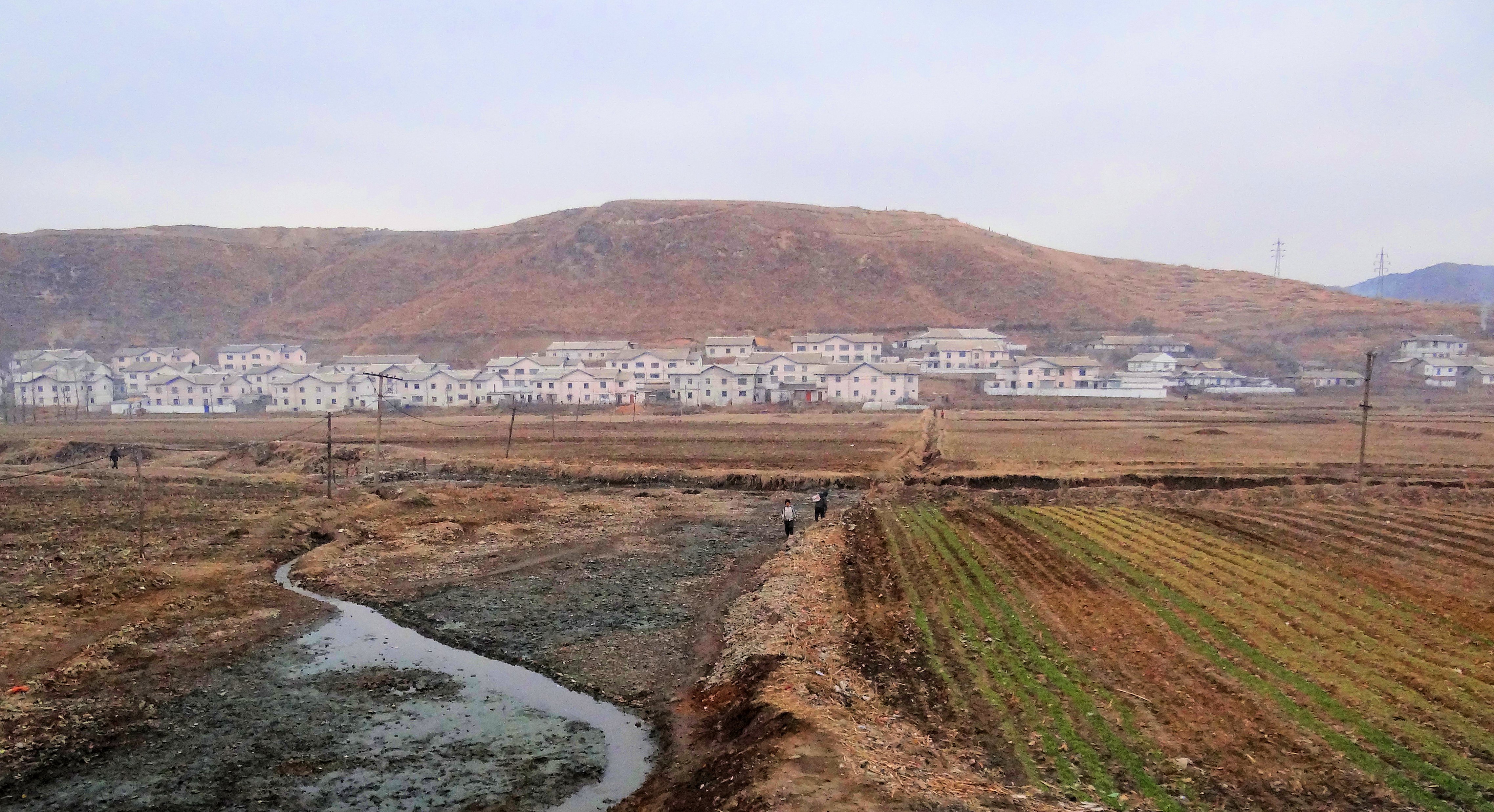|
Mangyongdae District
Man'gyŏngdae-guyŏk or Man'gyŏngdae District () is one of the 18 guyŏk (wards) that constitute Pyongyang, P'yŏngyang, North Korea. It began as a village called Mangyongdae-ri, Man'gyŏngdae-ri in South Pyongan Province, South P'yŏngan Province before becoming a district of P'yŏngyang in September 1959. The area is surrounded by several hills, the highest one named because one can enjoy a bird's-eye view of the surrounding scenic landscape, and the village at its foot is called Man'gyŏngdae. Man'gyŏngdae was the birthplace of North Korean leader Kim Il Sung. Man'gyŏngdae-guyŏk extends to the west past the Sunhwa River, to Kangso-gun. Kwangbok Street is a residential district of high rise apartments populated by members of the DPRK media and cultural institutions. Administrative divisions Man'gyŏngdae-guyŏk is divided into 26 ''tong'' (neighbourhoods) and 2 ''ri'' (villages): * Changhun 1-dong () * Changhun 2-dong () * Changhun 3-dong () * Ch'ilgol 1-dong () * Ch'il ... [...More Info...] [...Related Items...] OR: [Wikipedia] [Google] [Baidu] |
North Korea
North Korea, officially the Democratic People's Republic of Korea (DPRK), is a country in East Asia. It constitutes the northern half of the Korea, Korean Peninsula and borders China and Russia to the north at the Yalu River, Yalu (Amnok) and Tumen River, Tumen rivers, and South Korea to the south at the Korean Demilitarized Zone, Korean Demilitarized Zone (DMZ). The country's western border is formed by the Yellow Sea, while its eastern border is defined by the Sea of Japan. North Korea, like South Korea, claims to be the sole legitimate government of the entire peninsula and List of islands of North Korea, adjacent islands. Pyongyang is the capital and largest city. The Korean Peninsula was first inhabited as early as the Lower Paleolithic period. Its Gojoseon, first kingdom was noted in Chinese records in the early 7th century BCE. Following the unification of the Three Kingdoms of Korea into Unified Silla, Silla and Balhae in the late 7th century, Korea was ruled by the G ... [...More Info...] [...Related Items...] OR: [Wikipedia] [Google] [Baidu] |
Special Cities Of North Korea
Special cities are one of the first-level administrative divisions within North Korea. There are four special cities in North Korea. Position in hierarchy and types Special cities are the higher-ranked administrative divisions in North Korea. There are three kinds of special cities in North Korea. The first level cities have equal status to the provinces. List of special cities Note: Pyongyang is classified as a capital city (''chikhalsi''), not a special city as Seoul in South Korea. In fact, the North Korean national newspaper and broadcasting say "Pyongyang ''Chikhalsi''". Some sources, most of them coming from South Korea, refer the city as a special city; however, these are old sources. Moreover, South Korea has corrected the city as a directly governed city, according to a South Korean newspaper in 1994. The official name of Pyongyang would be "Pyongyang''-si''" in the Republic of Korea, which officially claims to represent the entire peninsula. List of defunct sp ... [...More Info...] [...Related Items...] OR: [Wikipedia] [Google] [Baidu] |
Pyongyang
Pyongyang () is the Capital city, capital and largest city of North Korea, where it is sometimes labeled as the "Capital of the Revolution" (). Pyongyang is located on the Taedong River about upstream from its mouth on the Yellow Sea. According to the 2008 population census, it has a population of 3,255,288. Pyongyang is a Special cities of North Korea, directly administered city () with a status equal to that of the Provinces of North Korea, North Korean provinces. Pyongyang is one of the oldest cities in Korea. It was the capital of two ancient Korean kingdoms, Gojoseon and Goguryeo, and served as the secondary capital of Goryeo. Following the establishment of North Korea in 1948, Pyongyang became its ''de facto'' capital. The city was again devastated during the Korean War, but was quickly rebuilt after the war with Soviet Union, Soviet assistance. Pyongyang is the political, industrial and transport center of North Korea. It is estimated that 99% of those living in Pyongy ... [...More Info...] [...Related Items...] OR: [Wikipedia] [Google] [Baidu] |
Administrative Divisions Of North Korea
The administrative divisions of North Korea are organized into three hierarchical levels. These divisions were created in 2002. Many of the units have equivalents in the Administrative Divisions of South Korea, system of South Korea. At the highest level are nine provinces and four special municipalities. The second-level divisions are cities, counties, and districts. These are further subdivided into third-level entities: towns, dongs (neighborhoods), ris (villages), and workers' districts. The three-level administrative system used in North Korea was first inaugurated by Kim Il Sung in 1952, as part of a massive restructuring of local government. Previously, the country had used a multi-level system similar to that still used in South Korea. (The English translations are not official, but approximations. Names are romanized according to the McCune-Reischauer system as officially used in North Korea; the editor was also guided by the spellings used on the 2003 National ... [...More Info...] [...Related Items...] OR: [Wikipedia] [Google] [Baidu] |
South Pyongan Province
South Pyongan Province (; ) is a province of North Korea. The province was formed in 1896 from the southern half of the former Pyongan Province, remained a province of Korea until 1945, then became a province of North Korea. Its capital is Pyongsong. Geography The province is bordered by North Pyongan and Chagang Provinces to the north, South Hamgyong and Kangwon Provinces to the east and southeast and North Hwanghae Province and Pyongyang to the south. The Yellow Sea and Korea Bay are located to the west. Administrative divisions South P'yŏngan is divided into 1 special city (''tŭkpyŏlsi''); 5 cities (''si''); 16 counties (''kun''); and 3 districts (1 ''ku'' and 2 ''chigu''). Its administrative divisions are: Cities * Nampo Special City (남포특별시/; created in 2010) * Pyongsong (평성시/; the provincial capital, established December 1969) * Anju (안주시/; established August 1987) * Kaechon (개천시/; established August 1990) * Sunchon-si (순천� ... [...More Info...] [...Related Items...] OR: [Wikipedia] [Google] [Baidu] |
Man'gyŏngdae
Mangyongdae () is a neighborhood in Mangyongdae-guyok, Pyongyang, North Korea. North Korean propaganda claims Mangyongdae is the birthplace of North Korean leader Kim Il Sung, although in his With the Century, memoirs he wrote that he had been born in the nearby neighborhood of Chilgol. Mangyongdae is where his father Kim Hyong-jik was from, and where Kim Il Sung spent his childhood. Mangyongdae has been designated as a historic site since 1947, and is listed as a Revolutionary Site. Original structures at the site have been replaced with replicas. Mangyongdae has since been incorporated to the city of Pyongyang. The Football at the Mangyongdae Prize Sports Games and Pyongyang Marathon, Mangyongdae Prize International Marathon are both named after the area. Gallery Birthplace of Kim Il-sung 03.JPG, Sign about Kim's birthplace with flowers in front of it (2012) Birthplace of Kim Il-sung 08.JPG, Mural near Kim's birthplace (2012) Kim Il-sung's birthplace.jpg, Kim Il Sung's birt ... [...More Info...] [...Related Items...] OR: [Wikipedia] [Google] [Baidu] |
Kim Il Sung
Kim Il Sung (born Kim Song Ju; 15 April 1912 – 8 July 1994) was a North Korean politician and the founder of North Korea, which he led as its first Supreme Leader (North Korean title), supreme leader from North Korea#Founding, its establishment in 1948 until Death and state funeral of Kim Il Sung, his death in 1994. Afterwards, he was succeeded by his son Kim Jong Il and was declared Eternal leaders of North Korea, Eternal President. He held the posts of the Premier of North Korea, Premier from 1948 to 1972 and President of North Korea, President from 1972 to 1994. He was General Secretary of the Workers' Party of Korea, the leader of the Workers' Party of Korea (WPK) from 1949 to 1994 (titled as chairman from 1949 to 1966 and as general secretary after 1966). Coming to power after the end of Korea under Japanese rule, Japanese rule over Korea in 1945 following Japan's surrender in World War II, he authorized Operation Pokpung, the invasion of First Republic of Korea, South K ... [...More Info...] [...Related Items...] OR: [Wikipedia] [Google] [Baidu] |
Sunhwa River
Han Sun-hwa (; born October 6, 1990), also known mononymously as Sunhwa, is a South Korean actress and singer. She is a former member of the South Korean girl group Secret. She made her television debut in 2004 while participating in SBS' ''Superstar Survival'' as a finalist, and in 2009, she was a regular cast member on a variety show called '' Invincible Youth''. Aside from music, she also ventured into acting and made her debut in the 2010 drama, ''More Charming By The Day''. Some of her notable works include '' School 2017'' (2017), '' My Contracted Husband, Mr. Oh'' (2018), '' Work Later, Drink Now'' (2021–2023) and '' My Sweet Mobster'' (2024). Early life Han Sun-hwa was born on October 6, 1990, in Buk District, Busan, South Korea. She has one younger sister and one younger brother, Han Seung-woo. Han's mother gave birth to her at the young age of 20. As the eldest child, she took care of her younger siblings by cooking them food and tutoring them when both of their pa ... [...More Info...] [...Related Items...] OR: [Wikipedia] [Google] [Baidu] |
Mangyongdae
Mangyongdae () is a neighborhood in Mangyongdae-guyok, Pyongyang, North Korea. North Korean propaganda claims Mangyongdae is the birthplace of North Korean leader Kim Il Sung, although in his memoirs A memoir (; , ) is any nonfiction narrative writing based on the author's personal memories. The assertions made in the work are thus understood to be factual. While memoir has historically been defined as a subcategory of biography or autobio ... he wrote that he had been born in the nearby neighborhood of Chilgol. Mangyongdae is where his father Kim Hyong-jik was from, and where Kim Il Sung spent his childhood. Mangyongdae has been designated as a historic site since 1947, and is listed as a Revolutionary Site. Original structures at the site have been replaced with replicas. Mangyongdae has since been incorporated to the city of Pyongyang. The Football at the Mangyongdae Prize Sports Games and Mangyongdae Prize International Marathon are both named after the area. G ... [...More Info...] [...Related Items...] OR: [Wikipedia] [Google] [Baidu] |
Mangyongdae Children's Palace
The Mangyongdae Children's Palace (or Mangyongdae School Children's Palace) in Pyongyang is a public facility managed by Korean Youth Corps in North Korea where pioneer members can engage in extra-curricular activities, such as learning music, foreign languages, computing skills and sports. It was established on 2 May 1989 and it is situated in , in the north of Mangyongdae-guyok. It is the largest of the palaces in North Korea dedicated to children's after-school activities. In front of the Children's Palace there are a grand sculpture group and two enormous fountains, rising 90 and 100 metres. The Mangyongdae Children's Palace has 120 rooms, a swimming pool, a gymnasium and a 2,000-seat theatre. The Mangyongdae Children's Palace is not to be confused with the situated in the north of the Kim Il-sung Square and founded in 1963. See also *Mangyongdae-guyok *Education in North Korea *Children's Palace (China) References Further reading * External links *Steps ... [...More Info...] [...Related Items...] OR: [Wikipedia] [Google] [Baidu] |





